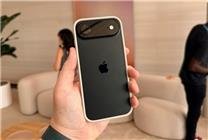iPhone Air: Unveiling Challenges in the Market
Key Takeaways
- The iPhone Air, priced from 7,999 yuan, is Apple’s thinest model yet, weighing just 165 grams and measuring 5.6 mm.
- Initial sales have fallen short of expectations, with prices dropping by approximately 100 yuan shortly after launch.
- Customer feedback highlights its lightweight design but raises concerns over functionality, particularly regarding the absence of certain features.
On October 26, the Chinese version of the iPhone Air was unveiled, marking a significant milestone as it transitions the country’s smartphone market into the eSIM era. This launch has generated excitement among tech enthusiasts but has also unveiled some challenges regarding market performance.
Design and Features
The iPhone Air sets a new standard in design, boasting an impressive weight of only 165 grams and a thickness of just 5.6 mm. Apple’s commitment to creating a nearly “senseless” tactile experience underscores its engineering prowess. Industry expert Li Nan declared it “the best iPhone in the past 10 years,” praising its materials, precision, design, and smooth performance.
Despite its accolades, the iPhone Air’s market reception in areas like Hangzhou has been less than stellar. Reports from local dealers indicate that the initial hype has dissipated quickly.
Immediate Market Reactions
In various digital markets in Hangzhou, retail performance has not met expectations. A mobile phone dealer remarked on the initial premium that quickly “broke,” with prices for both black and white models dipping by about 100 yuan shortly after launch. This rapid depreciation has sparked conversations about the model’s overall desirability compared to the recently released iPhone 17 series.
Customer Perspectives
Initial customer reactions to the iPhone Air have been mixed. Some consumers are drawn to its lightweight and sleek design, noting that it is an appealing option for those who prioritize portability. However, others have expressed valid concerns about its practicality.
One customer highlighted the absence of key features such as a physical camera and card support, which they believe detracts from the overall user experience. Many are frustrated with having to visit business offices to manage SIM card transitions, a process they find unnecessarily complicated.
The Business Implications
The early price cut reflects broader market trends and consumer sentiment. With the smartphone market brimming with options, the iPhone’s premium pricing strategy may face scrutiny. As competition intensifies, consumer preference will increasingly dictate market success.
The situation raises important questions:
- Sustainability of Premium Pricing: As brands innovate and release new models, can Apple maintain its premium positioning in the face of growing value-driven competition?
- Feature Expectations: How do consumer expectations for features like cameras and card support influence purchasing decisions in a market that increasingly favors multifunctional devices?
- Future Strategies: What strategies will Apple employ to regain traction in a market that appears to be shifting rapidly in terms of user preferences and pricing dynamics?
Conclusion
The iPhone Air represents a bold step in Apple’s design evolution but faces significant challenges in market acceptance. As consumer expectations shift and competition grows fiercer, Apple will need to reassess its approach to align with user needs while maintaining its reputation for innovation. For tech enthusiasts and casual users alike, the iPhone Air invites both admiration and critical examination, signaling a complex landscape for future smartphone releases.
The transition to the eSIM era may offer potential advantages, but the initial market reception suggests that the journey toward widespread adoption will require thoughtful navigation of consumer expectations and technological advancements.







